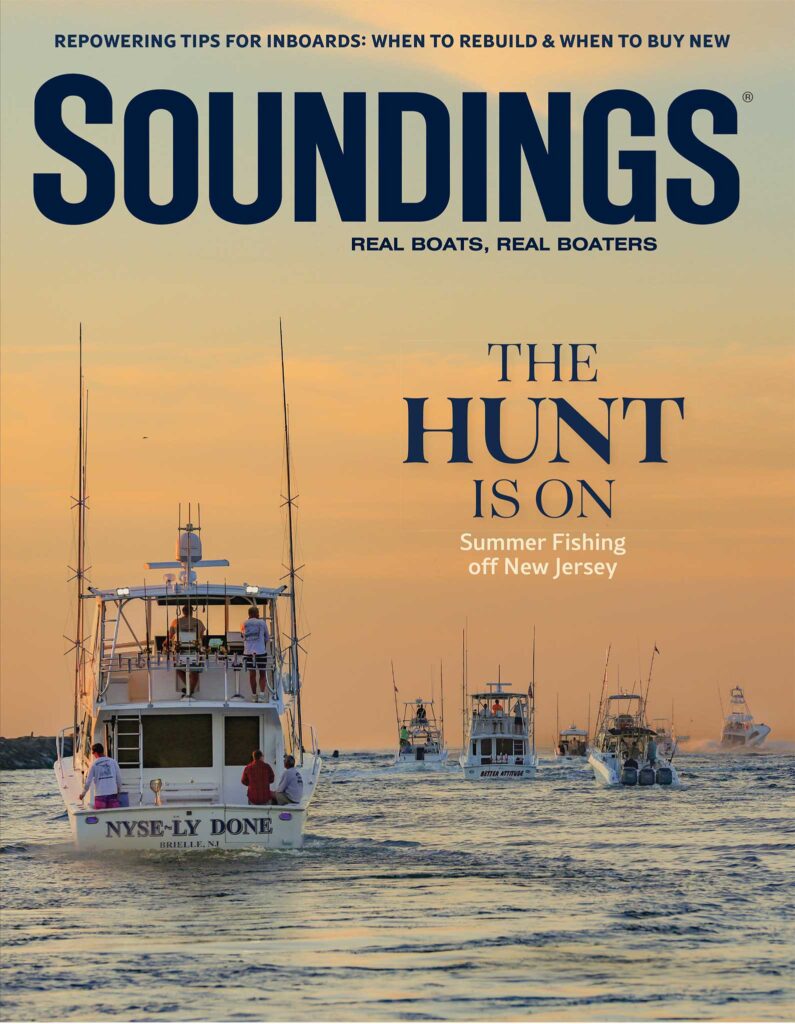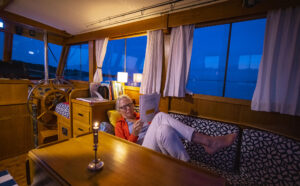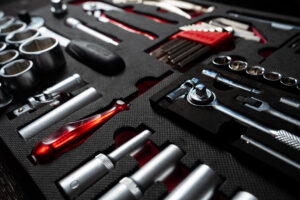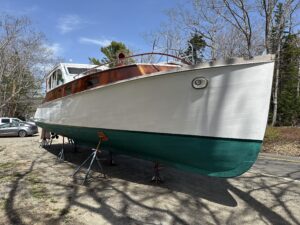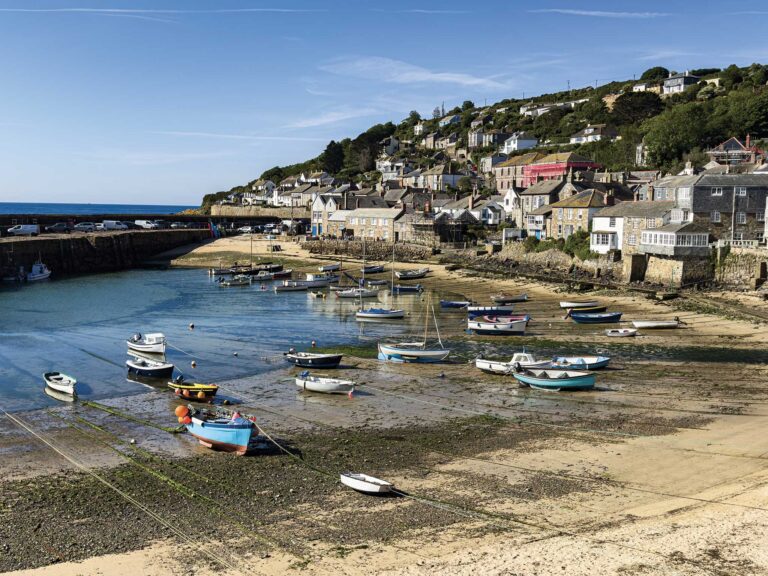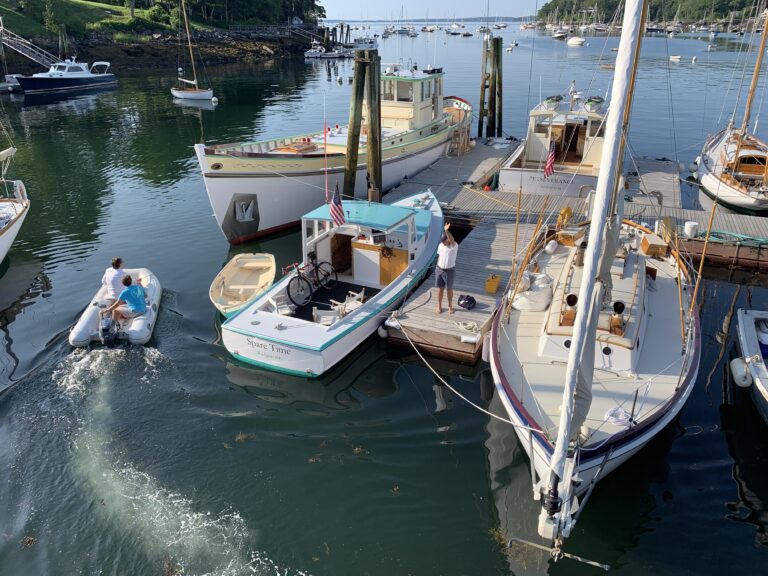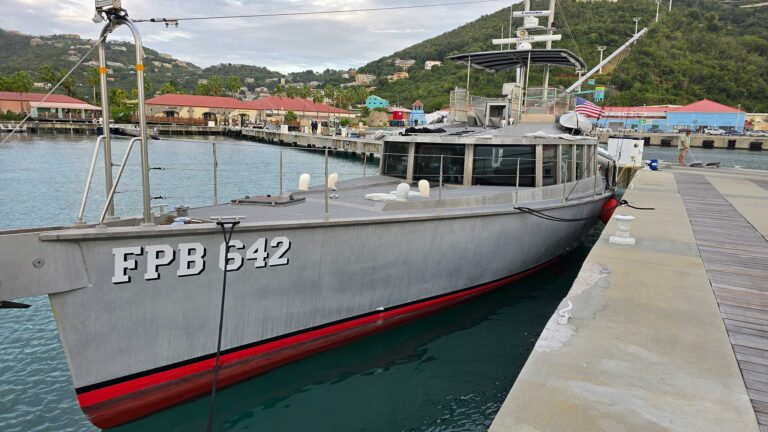
You may not believe the following, but it’s what happened as well as I can remember. It’s like a venture into The
Twilight Zone from the annals of boating.

A guy buys a boat, sight unseen. He’s in California; the boat is in Florida. (I’ve omitted and skewed names and places
out of kindness, I suppose.) The dream boat is around 30 feet long. It’s one of those brands that people talk about. They
say it’s so flimsy it’ll sink if it hits a jellyfish. But the guy sees it as his key to island living and high-seas adventure.
Which he gets. Somewhat.
He flies over to the East Coast, where his dream awaits, tugging at her mooring, or so the saying goes. She is tugging
at those moorings, probably, because her previous owner didn’t have enough money to dock her.
The guy goes to the local ship’s chandlery. You know, the one that sells everything nautical for cheaper and has plenty
of experts to tell you what you need. He befriends one of those experts and fits out the boat to “go cruising.” After
paying the bills and having a few beers with his new friends, with whom he shares a few stories about his great
experience and the exploits to come, he “sets sail.” Without insurance. Saving money. Again.
It’s the first time he’s been out of the inlet. It’s probably the first time he’s been out of any inlet. Actually, come to
think of it, it’s probably the first time he’s sailed in the ocean. A cold front is on the way, but this will make for a great
northerly to get him south cheaply. The books say he can “ride the wind.” He isn’t at sea for long before the ride
becomes uncomfortable, and he begins to think about heading into the next inlet and finding a nice, secure berth in
some marina so he can relax and clean the upchuck he is regularly releasing into his bilge. It will be a piece of cake.
(No, not the upchuck — the secure marina.) He’ll just head into the next inlet down the coast.
He turns toward the green flashing light. It is, indeed, the channel light to which his book refers. The only problem is that there is a dogleg in the channel, and he runs over a part of the dog while getting to the light. Between where he
starts to come in and where he would have rounded the green light is a lovely shoal. I should have said he ran over
part of the bear instead of part of the dog because, with the nice low tide, it is a bare shoal.
The guy starts hollering on the VHF radio for a salvor. A representative of a well-qualified company comes to the
scene, risking boat and life to check it out. He’ll charge $8,500. Considering that the boat is hard up and full of water
with the strength of the Atlantic crashing it farther onto the sand, and considering that it’s a dangerous job and one that
requires a lot of savvy and equipment, that’s not a bad deal.
The guy figures he knows better and gets on his cell and calls his friend from up the coast. Friend says he’ll do it for
$300.

Friend heads down in a car and hires a local tourist boat. He gets aboard the salvage (rather miraculously) and shoots
some foam into the big hole that has appeared around the rudder shaft, which came out with the rudder, which is now
under the sand … or somewhere. Maybe that is a good idea, but it’s not good enough. The problem is he forgets about
the other holes where the hull crunched into the hard sand of the shoal. Maybe it is out of sight, out of mind, because
those holes are underwater, not to mention under sand.
Nevertheless, the tourist boat starts pulling the sailboat off the shoal. But a few things hold it back, such as a couple
tons of sand and the anchor. The guy had read the books, and one of the first things he did when he hit the shoal was
to throw over the anchor. The books said you’re supposed to kedge off when you go aground. But kedging into an
onshore northeaster when you happen to be onshore apparently wasn’t the “going aground” the book was talking
about.
So, of course, the guy jumps into the water to retrieve his anchor. It might be an expensive anchor; they usually are.
And, of course, the sea is a bit overwhelming, and the outgoing current begins to take the guy out to sea, where
drowning would be a logical conclusion to the venture.
As luck (and curiosity) would have it, an employee of the real salvage company is up on the beach watching the saga.
And as fate would have it, this person is a surfer with his board in his truck. He grabs the board, jumps into the huge
waves and paddles out to rescue the guy.
The tourist boat gets the sailboat off with brute strength. Normally, once out of the waves, the rescue boat would
probably take the troubled boat alongside to get beaucoup pumps aboard and stabilize it. If the victim boat was sinking
(as it is, rapidly) the rescue boat would beach it in a safe place. Neither happened. Perhaps because the rescue boat
operator fears the sinking boat will take down his own boat, he puts the sinking boat on a long hawser and heads into a
crowded marina.
As the boats approach the marina — where I am standing — the sinking boat is busily doing just that (sinking) and
wallowing from side to side, as sinking boats are prone to do with just a few waves. As the boat wallows it also veers
off from port to starboard, port to starboard, also as sinking boats (or, for that matter, towed boats in general) are prone
to do. The gunwales are about a foot above water as the boats approach the haulout slip, lumbering like a drunken
Sherman tank.
Not the least of the miracles of the day is that the sailboat doesn’t crash into any of the numerous boats, and doesn’t
sink in the channel. The skillful workers in the marina’s yard get hold of her and get her in the sling and up she goes,
pouring out water like a sieve.
The boat, as noted, doesn’t have any insurance to cover the loss. And it certainly doesn’t have any insurance to cover
the damage that could have been done to other boats in the marina. And there is no insurance to cover salvage; just
good people chipping in. I doubt that there is even any trip insurance to cover cancellation of the cruise or the flight
home. And I doubt the yard could cover repair (rebuild) bills by selling the boat.
It probably went to the grinder. And even if the guy got another boat, it’s unlikely he ever got to the Bahamas, the
Virgin Islands or Bora Bora, which isn’t even in the same ocean. But who cares about details when you’re cruising in
The Twilight Zone?
This article originally appeared in the September 2017 issue.

